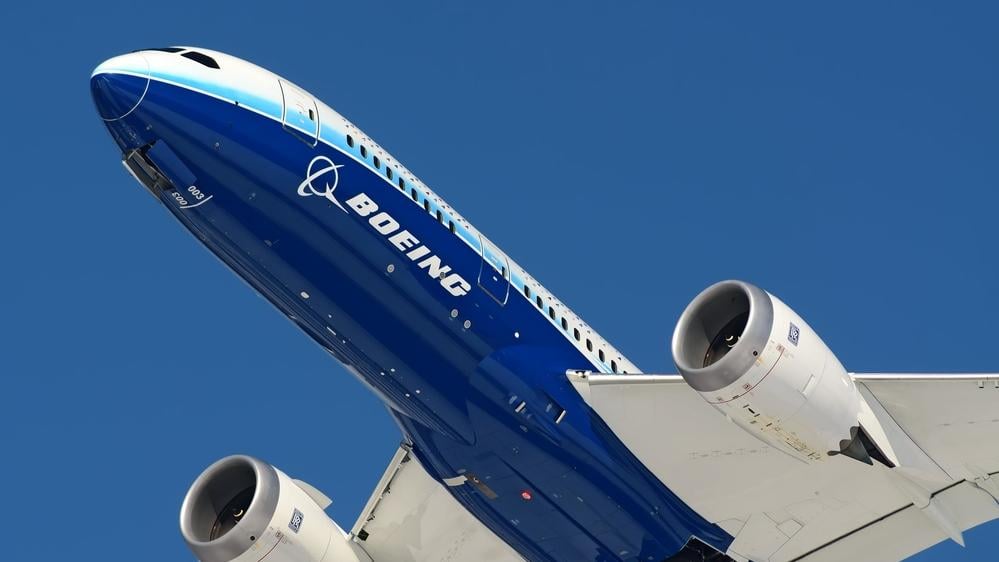Disasters can act as brutal audits of organisations to which even veritable institutions like Boeing are no exception. In the wake of two fatal crashes as well as a mid-flight door blowout, Boeing has shaken up its C-suite and pledged to prioritise safety over profit. Will these measures solve its problems? We address this question in the context of operations, safety and organisational economics.
Drawing on a wide body of research and experience, we consider not only Boeing’s actions but also those of the Federal Aviation Administration (FAA). Our analysis goes beyond Boeing’s merger with McDonnell Douglas and the corporate culture that emerged. We doubt that current remedial actions by Boeing and the FAA will “fix” Boeing, and suggest measures that could help.
What we can learn – and not learn – from Boeing
First, appointing Stephanie Pope as the president of its commercial aviation division will only give Boeing more of the same. Like outgoing CEO Dave Calhoun, Pope is an accounting graduate who spent much of her career in finance.
This matters because educational training influences the way a person sees the world. As renowned philosopher of science Norwood Hanson noted, all observations are theory laden. Theories not only guide observation, they also guide attention and focus. While theory can also be acquired by work experience, Pope – like Calhoun before her – does not have experience in aeronautical manufacturing or safety.
Consider Dennis A. Muilenburg – Calhoun’s predecessor under whose watch two Boeing 737 MAX airliners crashed. Muilenburg, who was fired in 2019 in the wake of the back-to-back disasters that killed 346 people, is an aeronautics engineer, but even he failed to foresee the problems.
What Boeing needs at the helm is someone with both the requisite educational training and manufacturing experience. After all, the company has designated its CEO as the “Accountable Executive” for its safety performance.
That brings us to our second point: Safety should not rest solely on the leadership. It should be underpinned by governance structures that promote good practices on one hand, and prohibit shady quality practices and other forms of opportunism on the other.
Good leadership can improve safety outcomes, but to depend on it is akin to favouring benevolent dictatorships over healthy democracies, which have institutional safeguards to prevent abuse of power and harm due to incompetence.
The solution lies in establishing governance with appropriately designed incentives, implementing proper administrative controls, allocating decision rights based on expertise and, ideally, selecting employees who place organisational well-being above myopic self-interest.
Good governance structures should also include mechanisms to ensure that the board of directors carries out its fiduciary duties towards the organisation. At the very least, the roles of the CEO and the Accountable Executive for safety performance at Boeing should be vested in different people.
Third, Boeing has become too big to fail, which significantly influences how its key decision makers and the FAA act. When FAA Administrator Michael Whitaker was recently asked if Boeing was too big to fail, he sidestepped the question, replying instead that it was too big not to build a safe airplane.
But the fact is, because Boeing plays a vital role in the United States economy and national defence, its leaders know it cannot fail. This has likely emboldened them to take risks, such as laying off up to 20 percent of technical staff – including engineers and mechanics – during the pandemic, with the assurance that they have impunity. Indeed, Muilenburg exited with a US$62 million pay cheque despite the 737 MAX fiasco.
While reducing dependence on Boeing and breaking it up may not be feasible, financial instruments like clawbacks could help rein in risky practices. Regulators could also impose requirements such as mandating professional engineer certification for key tasks, which would force Boeing to think twice before letting employees go.
The confidence trap
Unfortunately, the FAA’s oversight process leaves much to be desired. Lulled by Boeing’s comparatively benign safety record before the 737 MAX mishaps, the regulator had allowed Boeing unprecedented latitude in self-certification. This is problematic for several reasons.
First, not only is it a clear conflict of interest, it is also self-defeating – investigators found that Boeing employees “deputised” to act on behalf of the FAA under the Organization Designation Authorization (ODA) programme had come under coercion by Boeing managers.
Meanwhile, in the past two decades since it began the ODA programme, the FAA has signed off on eliminating thousands of quality inspections per airplane without due diligence. It has also outsourced its own expertise, essentially becoming little more than an auditor.
Remedying this requires dialling back the cosy relationship between Boeing and the FAA until it is in the “Goldilocks zone”. This means promoting whistleblowing and red teaming Boeing and FAA staff to conduct effective quality inspections and audits.
The revolving door between Boeing and the FAA also needs to be paused. Case in point: Former FAA senior official Ali Bahrami pushed for, and signed off on, recertification of the 737 MAX after the twin crashes. He had previously worked at the American Institute of Aeronautics and Astronautics, a trade association that had also represented Boeing.
The FAA should also consider suspending or revoking Boeing’s ODA status if it does not demonstrate convincing, significant improvements to a third party or independent auditor.
Of course, there are no guarantees that the above measures will solve Boeing’s problems. Due to its size and strategic importance, Boeing might well continue to exist in spite of safety lapses. But for organisations and regulators in high-risk industries, the fall from grace of a once-mighty brand holds salutary lessons.
“INSEAD, a contraction of “Institut Européen d’Administration des Affaires” is a non-profit graduate-only business school that maintains campuses in Europe, Asia, the Middle East, and North America.”
Please visit the firm link to site






